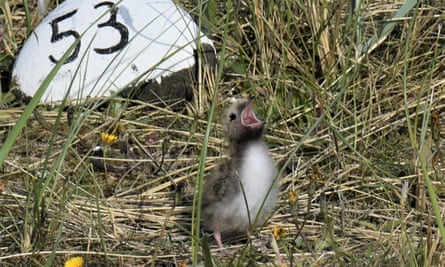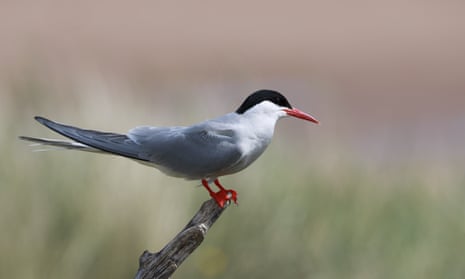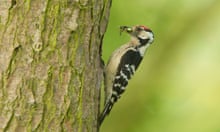National Trust rangers have described their “heartbreak and worry” after recovering more than 600 dead chicks at Britain’s largest mainland colony of Arctic terns.
The trust said on Monday that Long Nanny, on the coast of Northumberland, had been hit by a suspected outbreak of avian flu during the peak of the breeding season.
Long Nanny is home to the nation’s largest breeding colony of Arctic terns with 1,600 breeding pairs this year, the highest number since 2018.
The lead ranger James Porteus said “the season started so well” but two weeks ago they started to notice some chicks were dying.
“Since then we have picked up over 600 dead Arctic tern chicks from across the site,” he said. “We have also started to discover some dead adults now which is equally heartbreaking and worrying.”

Rangers have suspended any activities that may disturb the colony such as counts or raising nests above the high tide mark.
Arctic terns are the long-distance superstars of the seabird world, breeding in places such as Northumberland before heading south to Antarctica – a round trip of up to 22,000 miles (35,000km) a year.
Ben McCarthy, the head of nature conservation at the National Trust, said the news was “devastating” for these vulnerable birds. “It will take years for the populations to recover.”
Long Nanny is also a nationally significant site for little terns, Britain’s second rarest breeding seabird.
Porteus suggested fingers were being crossed. “So far,” he said, “we’ve only discovered one dead adult little tern and observed one poorly chick so let’s hope the fact that they nest separately from the Arctic terns will give them a chance of survival.”
Twelve months ago bird flu devastated seabird colonies on the Farne Islands off Northumberland, which are also managed by the trust. It caused more than 6,000 bird deaths, but Long Nanny was unaffected.
The number of dead birds on the Farne Islands this year has been much lower, about 500, but the trust said numbers had increased in recent days with kittiwakes, black-headed gulls and guillemots the most affected.
Teams are waiting for test results to confirm whether the deaths at both sites are the result of bird flu.










